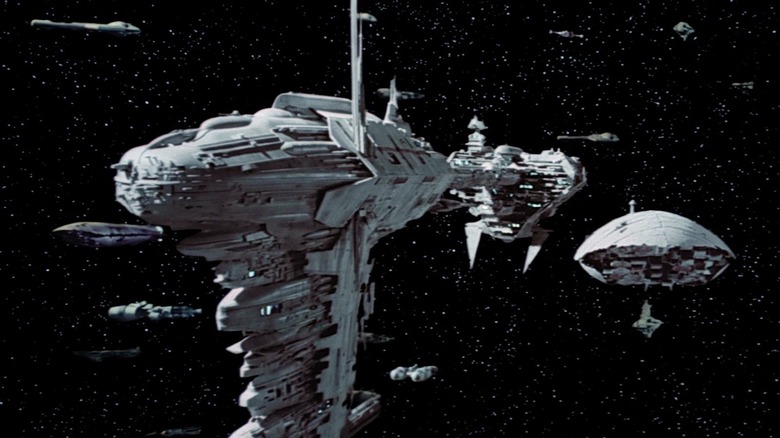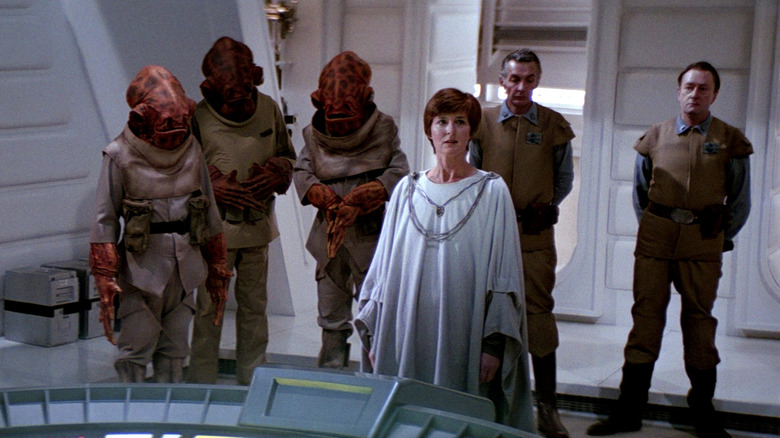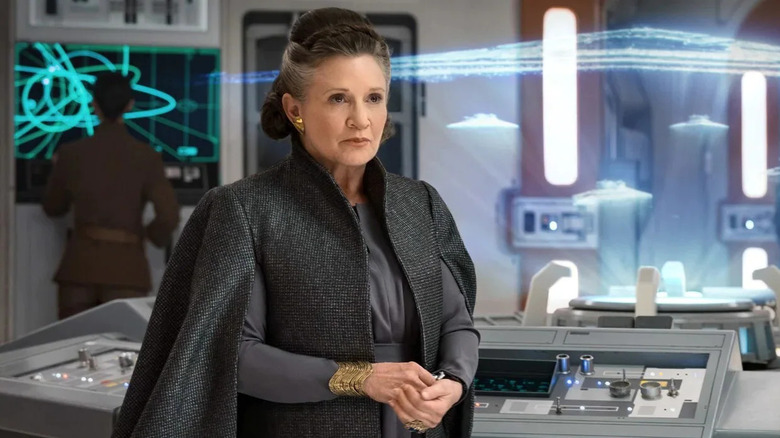Why The Rebel Alliance Fleet Is Being Decommissioned In The Mandalorian
This post contains spoilers for "The Mandalorian" season 3, episode 3, "The Convert."
In the first season of "The Mandalorian," Dr. Penn Pershing (Omid Abtahi) was still in the thrall of the Imperial Remnant and Moff Gideon as a science and cloning officer. He joined the Amnesty Program of the New Republic in a bid to be useful to the galaxy once more, as well as avoid a war tribunal. As his task in the Amnesty Program, he was given the job of inventorying items slated for destruction and decommission by the New Republic. Much of his work revolves around the cataloguing of equipment on Star Destroyers in the disposal yards, ready to be junked. Some of that equipment could still be of value to the New Republic, though, and he raises the issue with his supervisor. The supervisor is skeptical that anything can be done and he mentions how behind they are in their work. They're decommissioning the assets of the Empire, but he reminds Dr. Pershing that they're decommissioning the Alliance Fleet, too.
Why would they be decommissioning the Alliance Fleet?
Mon Mothma's Choice
As the head of the new galactic government, Mon Mothma sought to find ways to prevent the sort of issues that led to the rise of Palpatine in the first place, while also putting the galaxy at ease, to let them know that the New Republic was not the Empire.
One of those measures — as featured in Chuck Wendig's book "Aftermath" — was her proposal to slash the Alliance fleet to only ten percent of its size. This way, they would have enough of a fleet to train local militias to handle problems in their sectors. For too many years, the Empire had ruled at the gun barrel of its navy, and the New Republic would not make the same mistake. They really would only keep enough of their fleet to keep the peace. This only passed after enough of the Imperial remnant disappeared into the outer rim or the unknown regions and were no longer viewed as a threat to the New Republic. The senate, under Mon Mothma's leadership, was able to pass the Military Disarmament Act shortly after the Galactic Concordance and formal Imperial Instrument of Surrender in the days and months after the battle of Jakku.
The Resistance
One of the chief opponents to the Military Disarmament Act was none other than Senator Leia Organa. Although for the next thirty years, the New Republic Navy, even at just 10% of its former size, remained the largest fleet in the galaxy, it was not enough to defend against the coming First Order.
This is part of what inspired Leia Organa to begin the creation of the Resistance, as the Chancellor at the time, Villecham (who would die on Hosnian Prime in the attack by Starkiller Base), ignored the threat of the First Order. You can read about the rest of the events that transformed Leia Organa from Senator back to General in Claudia Gray's important novel "Bloodline."
Although the Disarmament Act was created with the best intentions and created a peace in the galaxy for thirty years, it allowed the remnants of the Empire to retreat to the unknown spaces and become the First Order.
"The Mandalorian" is showing us those early steps that led to the dismantling of the Alliance fleet and the birth of the First Order, which we'll see come back to the galaxy with a vengeance in "The Force Awakens."
"The Mandalorian" is streaming only on Disney+. New episodes debut on Wednesdays.


